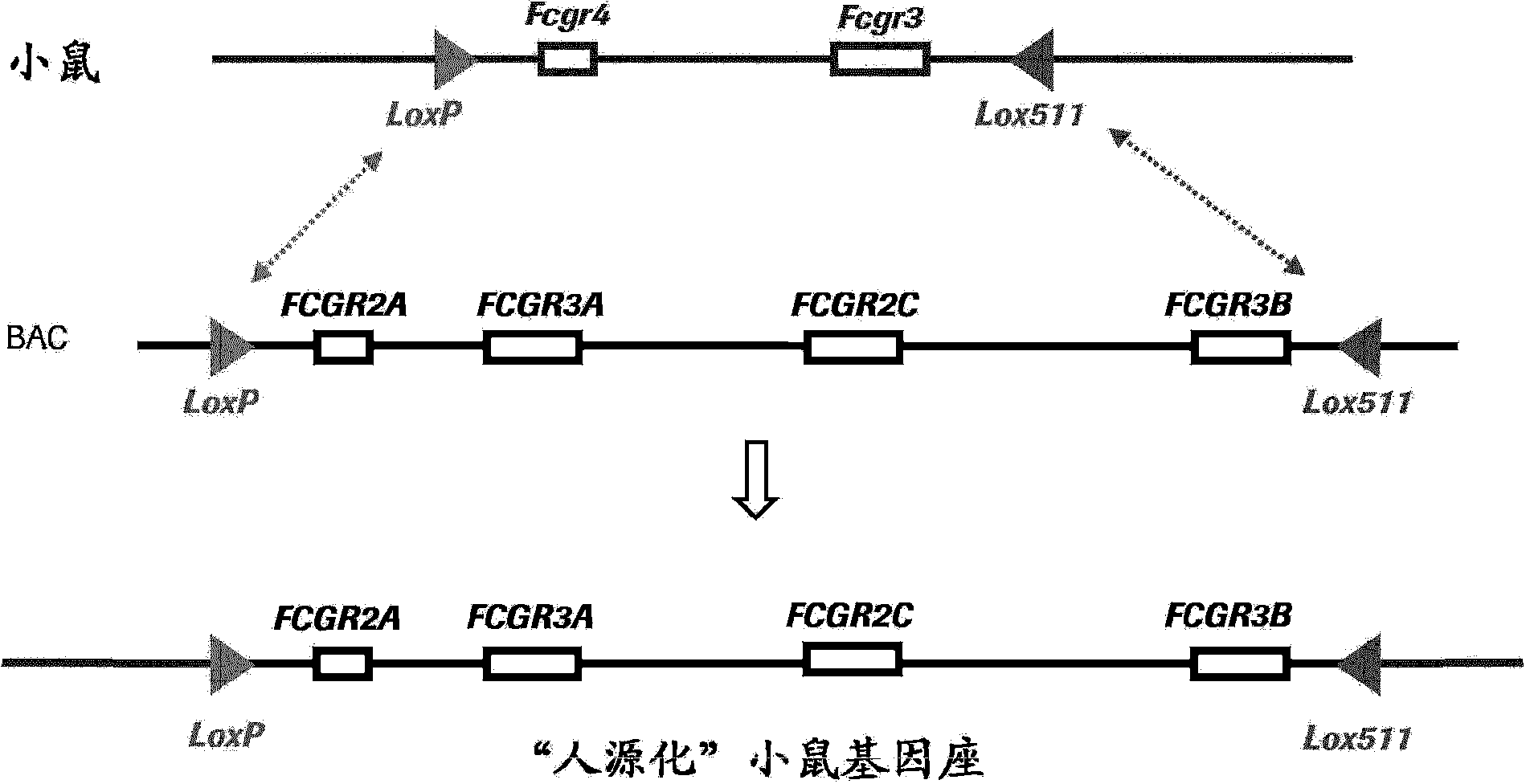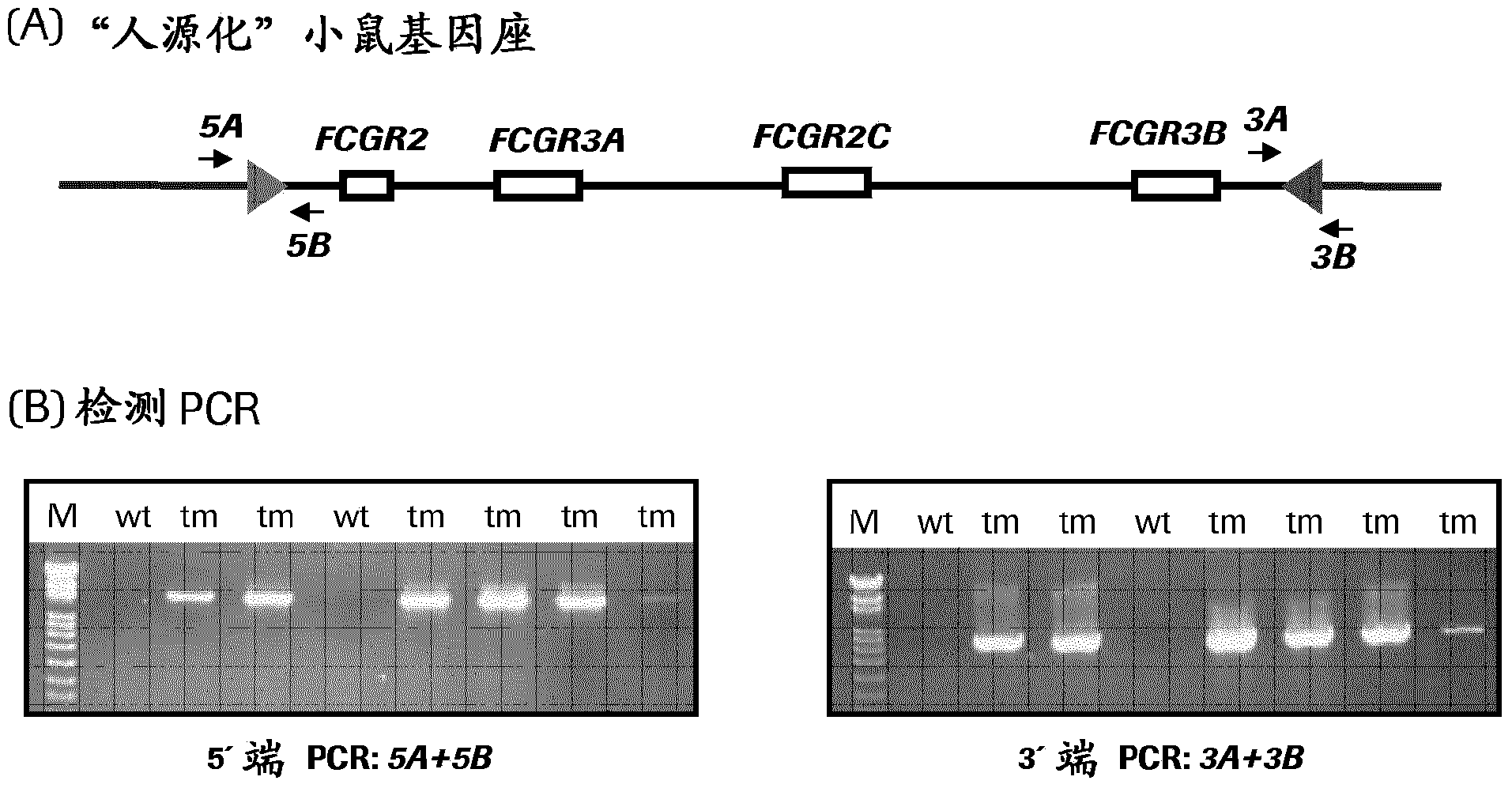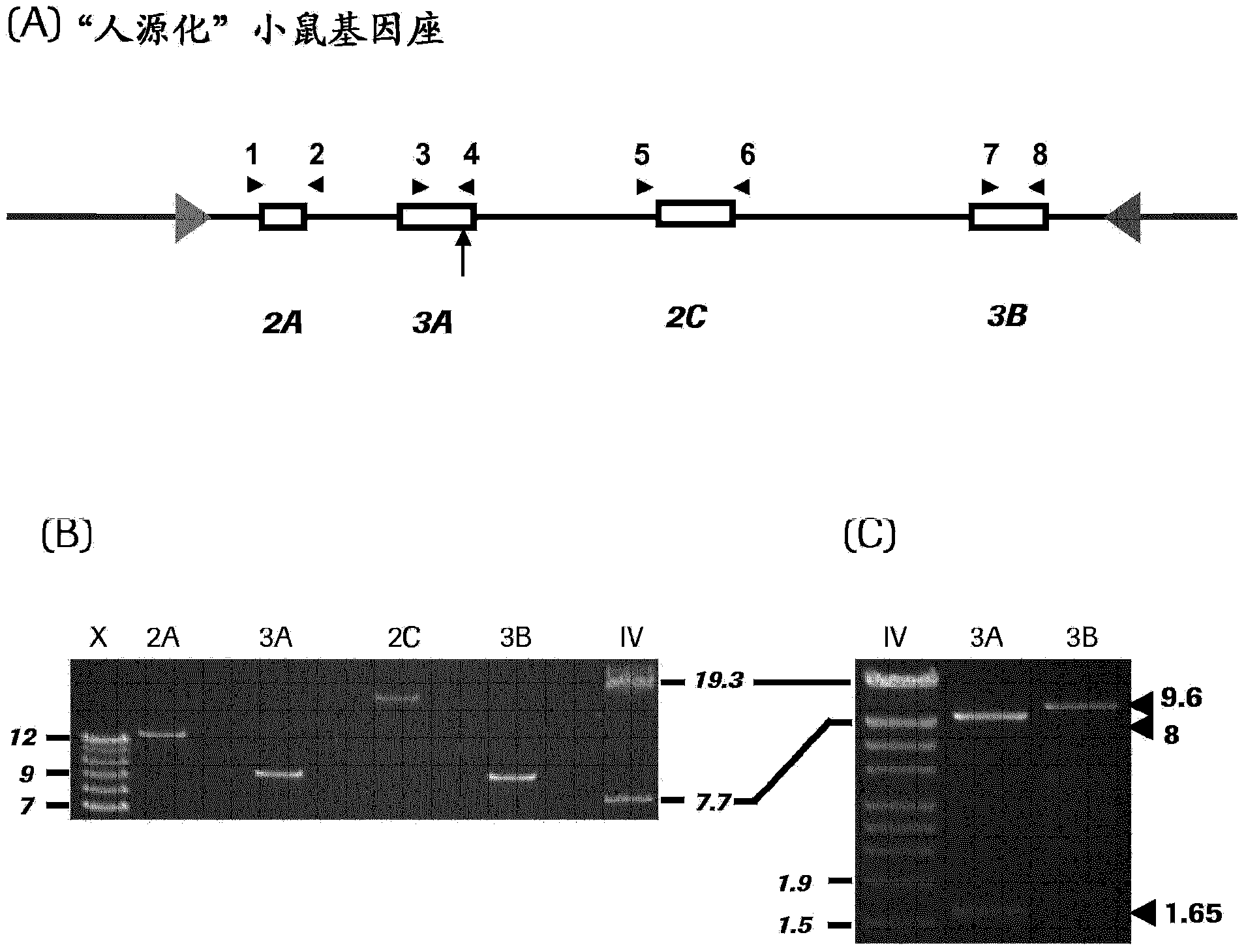In vivo ADCC model
An antibody, endogenous technology, applied in the field of transgenic non-human animals at the FcgR) locus, can solve the problem of increasing the overall level of FcgR
- Summary
- Abstract
- Description
- Claims
- Application Information
AI Technical Summary
Problems solved by technology
Method used
Image
Examples
Embodiment Construction
[0038] The entire locus containing two murine low-affinity receptor genes (Fcgr4, Fcgr3) was replaced with four human genes (FCGR2A, FCGR3A, FCGR2C, FCGR3B) via recombinase-mediated gene replacement (RMGR). Using this technique, the 54 kb mouse genome, including Fcgr4, Fcgr3 and adjacent non-coding DNA regions, is first flanked by two incompatible Lox elements via sequential homologous gene targeting in mouse ES cells (LoxP and Lox511). In parallel, a BAC construct was prepared containing 160 kb of human genomic DNA including the genes FCGR2A, FCGR3A, FCGR2C, FCGR3B and adjacent noncoding regions, also flanked by LoxP and Lox511. Using the latter DNA construct, Cre-recombinase-mediated exchange of the mouse region with human DNA yields mutant ES cells bearing four human low-affinity FcgR genes that replace the two mouse counterparts. and located at the natural position of said counterpart in the mouse genome (see Figure 1-3 ). Chimeric mice were generated by microinjecting...
PUM
 Login to View More
Login to View More Abstract
Description
Claims
Application Information
 Login to View More
Login to View More - Generate Ideas
- Intellectual Property
- Life Sciences
- Materials
- Tech Scout
- Unparalleled Data Quality
- Higher Quality Content
- 60% Fewer Hallucinations
Browse by: Latest US Patents, China's latest patents, Technical Efficacy Thesaurus, Application Domain, Technology Topic, Popular Technical Reports.
© 2025 PatSnap. All rights reserved.Legal|Privacy policy|Modern Slavery Act Transparency Statement|Sitemap|About US| Contact US: help@patsnap.com



